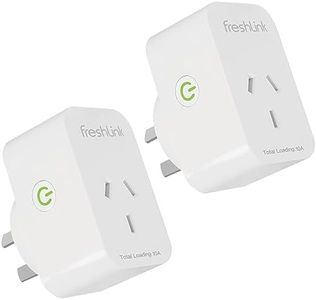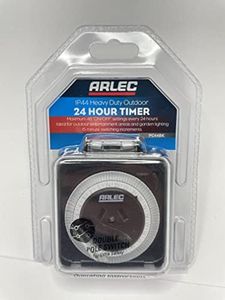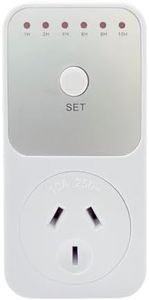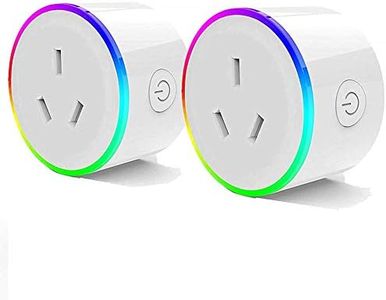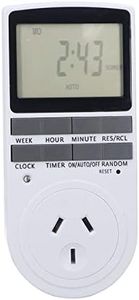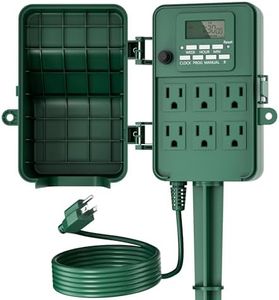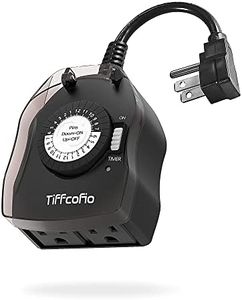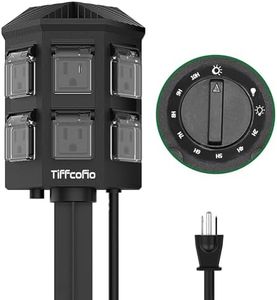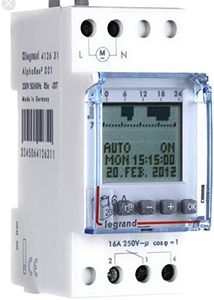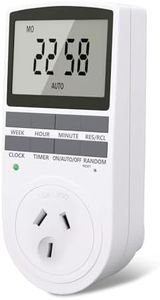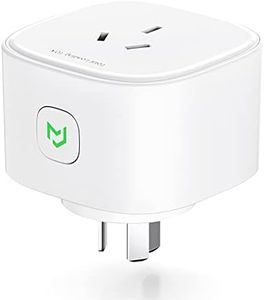We Use CookiesWe use cookies to enhance the security, performance,
functionality and for analytical and promotional activities. By continuing to browse this site you
are agreeing to our privacy policy
10 Best Light Timers
From leading brands and best sellers available on the web.By clicking on a link to a third party's website, log data is shared with that third party.
Buying Guide for the Best Light Timers
Choosing the right light timer can make managing lighting in your home, garden, or workplace much more convenient and energy-efficient. A good timer helps you automate when your lights turn on and off—ideal for security, cutting down on energy use, or just making life a little easier. When picking a light timer, think about where and how you want to use it, and look at the features that match your needs best.Type (Mechanical vs Digital)Light timers come mainly in two types: mechanical and digital. Mechanical timers use a simple dial that you turn by hand to set the schedule, while digital timers have a screen and buttons and often let you set more precise times and multiple programs. Mechanical timers are usually simpler to use and great for basic needs like turning a lamp on and off at set times each day. Digital timers are better if you want more control, such as different schedules for different days. Think about how much flexibility you need and how comfortable you are with programming devices.
Programming OptionsThis refers to how flexible the scheduling is on the timer. Some timers only let you set one on/off time each day, while others allow multiple on/off programs, different settings for different days, or even random modes to mimic someone being home. If you only need your lights on and off at a set time each day, a basic option works well. If you need to set different schedules for weekends or to boost home security, look for models with more advanced programming.
Maximum Load/Power RatingEvery light timer can handle only a certain amount of electrical load, measured in watts or amps. This spec tells you the maximum power the timer can safely switch on and off. If you plug in lights or devices that need more power than the timer can handle, it can be unsafe. Check the total wattage of everything you want to control and make sure the timer's power rating meets or exceeds that number. For a single desk lamp, almost any timer will do, but for Christmas lights or multiple appliances, make sure you aren’t exceeding the limit.
Plug-In vs HardwiredMost everyday timers are plug-in style: you simply plug them into an outlet and plug your device into the timer. Some are hardwired, meant to be installed directly into your home’s electrical system. Plug-in timers are best for portable use and can be moved easily, perfect for lamps or holiday decorations. Hardwired ones are more permanent and suited for controlling overhead fixtures or outdoor lights. Choose according to whether you need something flexible or a built-in solution.
Indoor vs Outdoor UseSome timers are designed specifically for indoor use, while others are built to withstand outdoor conditions like rain, heat, or cold. Always check if the timer is rated for outdoor use if you plan to use it outside. Using an indoor timer outdoors can be dangerous. For patio lights, pool pumps, or garden setups, opt for an outdoor-rated timer. For indoor lamps and electronics, a standard indoor timer works fine.
Ease of UseLight timers can range from very simple to fairly complex when it comes to setting schedules. Some have large, easy-to-read dials or screens and clear instructions, while others require more steps to program. If you want something hassle-free, look for timers labeled as easy-set or with physical dials. If you’re comfortable setting up digital gadgets, you might appreciate a programmable timer with more features.
